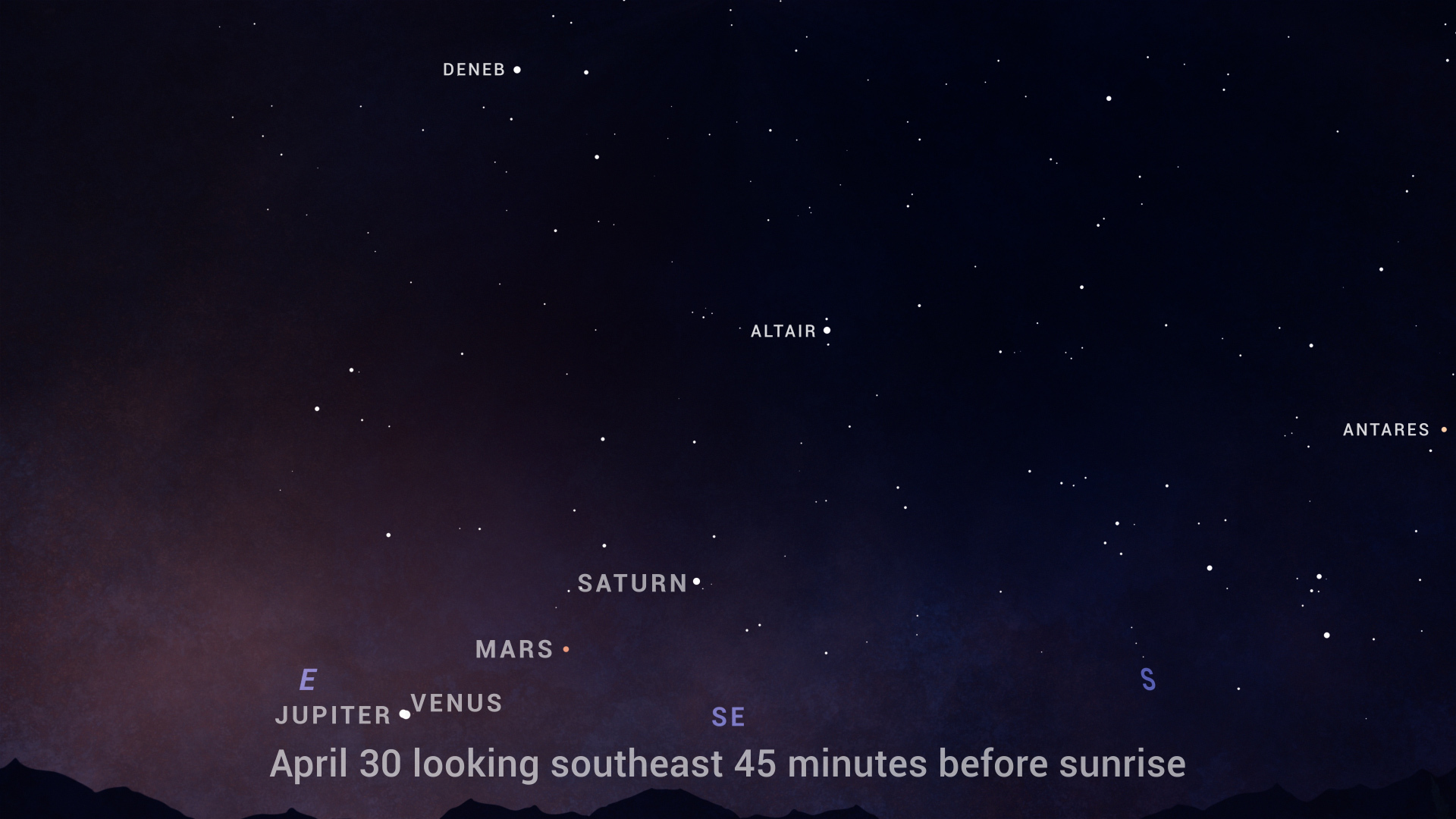Don't miss Venus and Jupiter shine extra close in the morning sky Saturday!
It's the closest they've appeared since 2016 and won't happen again until March 2023.

Venus and Jupiter — the two brightest planets in the sky — are headed for a close encounter tomorrow (April 30).
The planetary meet up, also known as a conjunction, brings Venus and Jupiter within just one-half degree of each other, which is equal to the apparent width of the moon. This is the closest Venus and Jupiter have appeared since August 2016. The next time the two planets will appear to cozy up to each other will be March 1, 2023.
The planets' closest approach will take place at 3 p.m. EDT (1900 GMT), according to EarthSky.org. However, skywatchers will have the best view of the conjunction beginning in the early morning, before the glare of the sun outshines the planets. The planets will appear close to each other for several days around April 30.
If you need binoculars or a telescope to see planets in the night sky, our guides for the best binoculars and best telescopes can help. Check out our best cameras for astrophotography and best lenses for astrophotography to prepare to capture the next planet sight.
Related: Partial solar eclipse of April 2022: When, where and how to watch it
A planetary conjunction occurs when two or more planets appear close to each other in the sky. However, the proximity of the planets is simply an optical illusion, whereby the planets appear to line up with each other from our vantage point on Earth. In reality, the solar system planets are very far away from each other. Venus will be 90.3 million miles (145.4 million kilometers) from us, while Jupiter is nearly six times farther away at 530 million miles (852.8 million km).
At conjunction, Venus will appear to the right and about 0.2 degrees south of Jupiter. The gas giant will steadily pull away to the west in the following days. The occurrence will be similar to the meetup of Mars and Saturn earlier in the month.
Breaking space news, the latest updates on rocket launches, skywatching events and more!
Venus and Jupiter will be best seen about 30-45 minutes prior to sunrise on April 30 and May 1. Weather permitting, viewers will want to find an area with no obstructions, like trees or tall buildings, to get a clear view of the horizon to the southeast as the planets will be quite low in the sky.
Venus will be substantially brighter at magnitude -4.1, while Jupiter will shine at magnitude -2.1, which is about one sixth as bright as Venus. Skywatchers can use binoculars or a telescope to get a good view of the planets' close encounter.
Editor's Note: If you snap a photo of the close encounter between Venus and Jupiter and would like to share it with Space.com's readers, send your photo(s), comments, and your name and location to spacephotos@space.com.
Follow Samantha Mathewson @Sam_Ashley13. Follow us on Twitter @Spacedotcom and on Facebook.

Samantha Mathewson joined Space.com as an intern in the summer of 2016. She received a B.A. in Journalism and Environmental Science at the University of New Haven, in Connecticut. Previously, her work has been published in Nature World News. When not writing or reading about science, Samantha enjoys traveling to new places and taking photos! You can follow her on Twitter @Sam_Ashley13.
